Aloe veras are incredibly beautiful plants that are popular in homes and gardens. These plants may seem difficult to grow, but they are quite easy, so long as you can grow them in the right conditions. If you want to grow aloe vera plants indoors, read this article.
Table of Contents
Benefits of Raising Aloe Vera Plants Indoors
Here are some reasons why you should consider growing aloe plants indoors:
1. Air Purifying

Did you know that you can purify the air of your room with an aloe plant? Aloe veras are examples of plants that photosynthesize by CAM photosynthesis (crassulacean acid metabolism).
Due to the high temperatures in the natural habitats of aloe plants, they have a different method of photosynthesis. These plants collect light for photosynthesis during the day and only open their stomata at night to exchange gases.
This means that you can enjoy fresh, oxygen-rich air when sleeping at night if you have aloes in your room.
Other examples of such plants that practice CAM photosynthesis are snake plants, pineapples, cactuses, and some orchids.
2. Aesthetics
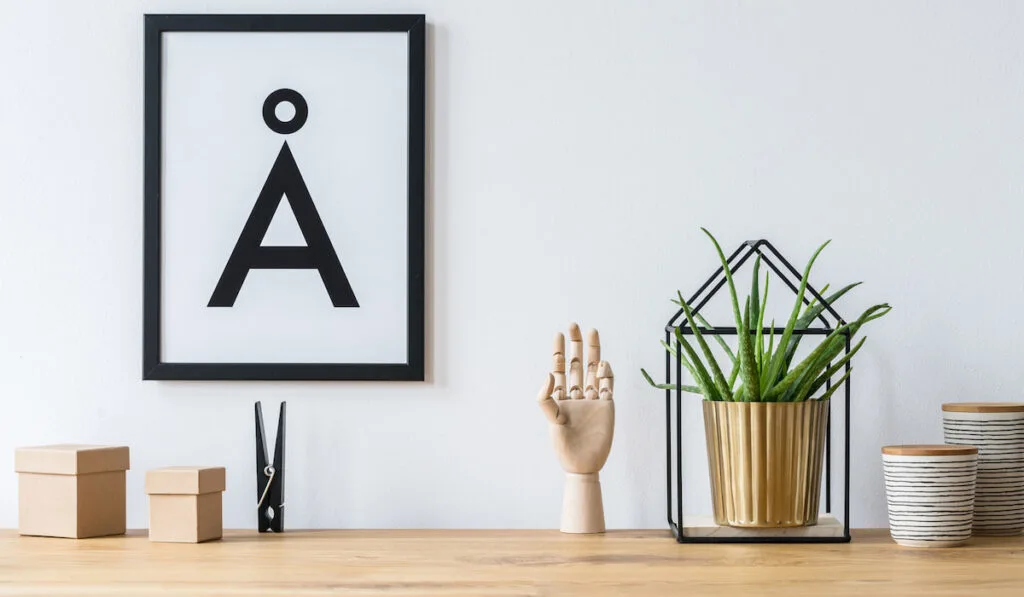
Aloes are succulents, and they have thick leaves. Aloe plants fit and beautify whatever environment you grow them in, so your room will look elegant if you grow aloe plants in it.
You can also increase the beauty of your plants by growing them in colorful or white pots and decorating them with beautiful mulch.
3. Protect Your Aloes From Pests
Now, this is more of a benefit to the plants than to you. If you grow your aloe plants outdoors, you may be exposing them to diverse types of pests. Getting rid of pests with pesticides can cost a lot of money.
However, you can grow your aloe plants indoors to reduce the chance of your plants getting attacked by pests.
It is also a benefit to you because you will be saving money. Also, your plants will look very pretty and healthy, beautifying your home even further.
Would you like to grow the aloes indoors? Keep reading to learn what you need:
What You Need to Raise Aloe Vera Plants Indoors
You need the following to grow aloe vera plants:
1. Aloe Offsets

To grow aloe plants, you need aloe offsets. Pops or offsets are the little aloe plants that grow just below mature aloes.
While you can grow aloes by propagating their stems and leaves, it is easier to start with their pops or offsets.
You can get aloe pops from people who have aloe plants, as the pops always grow in abundance. You can also buy young aloes from gardening stores nearby. Please make sure that the pops look healthy and green.
They should have at least two or three pairs of green succulent leaves. If you are collecting the pops by yourself, use a brush to remove the soil covering your aloe stems (where the pops are attached) and then gently cut that section of the stem containing the roots of the pops off the mother plant.
2. Suitable Substrate and Pot
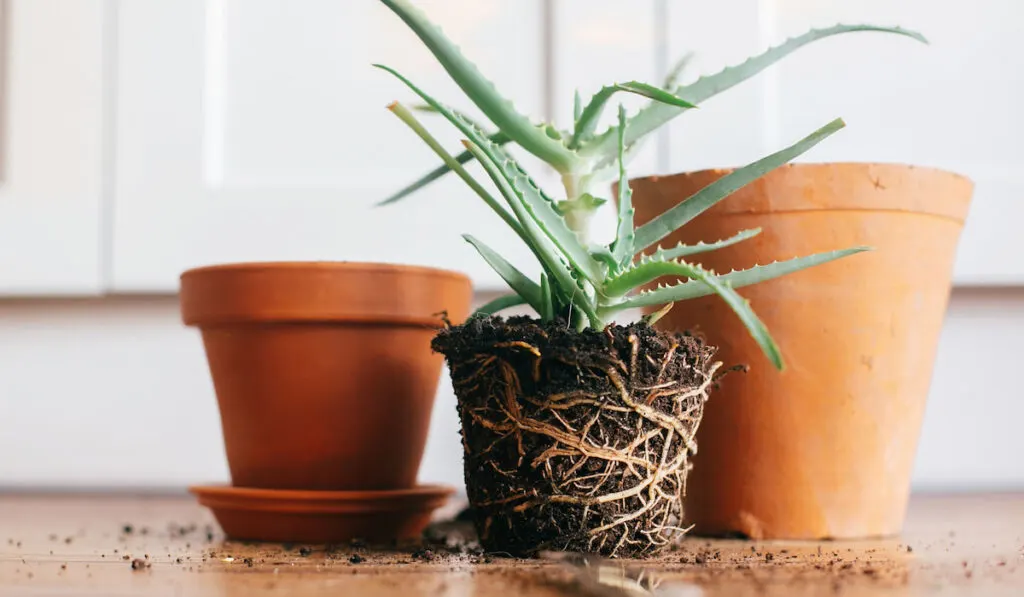
Aloes are very picky when it comes to their substrate. Aloe substrate should be airy so that their roots can breathe easily, and water can quickly drain.
You can get a suitable substrate for your aloes from any gardening shop nearby. However, you can make one yourself by mixing two-parts sand, one-part perlite, and some compost.
The pots should be made from terra-cotta or any material that can aid proper water drainage. The aloe pots should have at least two drainage holes through which excess water can drain out.
3. Water
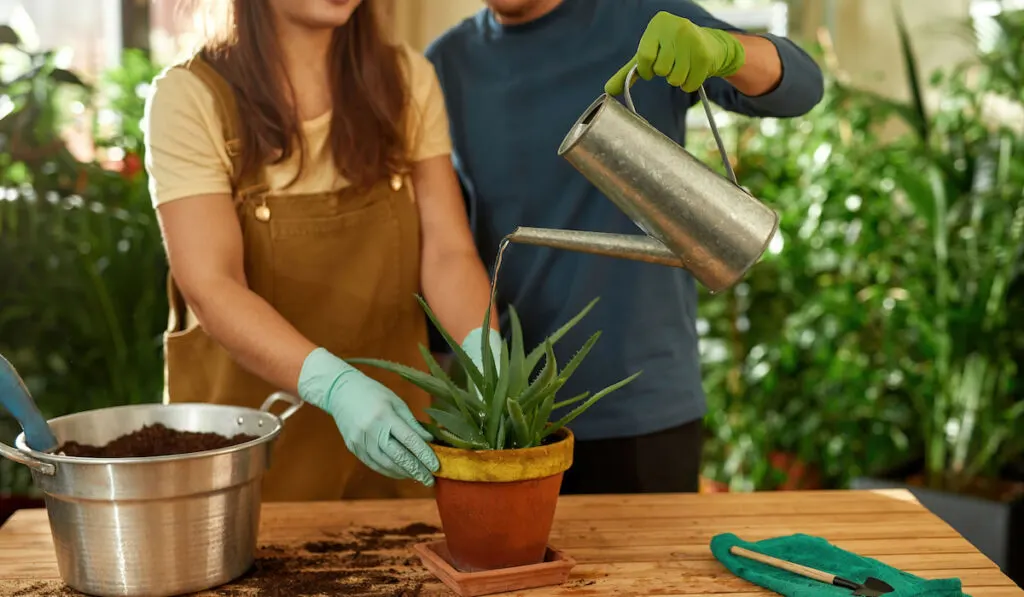
It does not matter what type of plant you want to grow; you need to water it often. Aloes need clean, dechlorinated water.
If you must use tap water, wait until it sits for at least a day before you water your aloes with it so that you do not water the plants with hard water.
4. Fertilizer

Even though aloes do not need as much fertilizer as other plants do, they do need occasional feeding.
While you can use either organic or inorganic types of fertilizer for your aloes, organic fertilizer is preferred so that you do not need to feed the plants as often.
You only need to mix their potting mix with compost, coffee grounds, or any other product before planting. You can also use slow-release granules for your aloes.
You should not use any fertilizer with readily available nutrients, as you may be overfeeding your aloes. If your plants are showing any sign of nutrient deficiency, you can use foliar fertilizer to correct the deficiency quickly.
5. Pesticides
Well, even though aloe plants growing indoors are not frequently visited by pests, you want to completely protect them from pest attacks by using pesticides.
You can use homemade products such as neem oil, baking soda solutions, and soapy water to prevent pests. However, if you have stubborn pests attacking the aloes, you will need to get chemical, plant-safe pesticides from any store near you.
6. Clean Gardening Tools
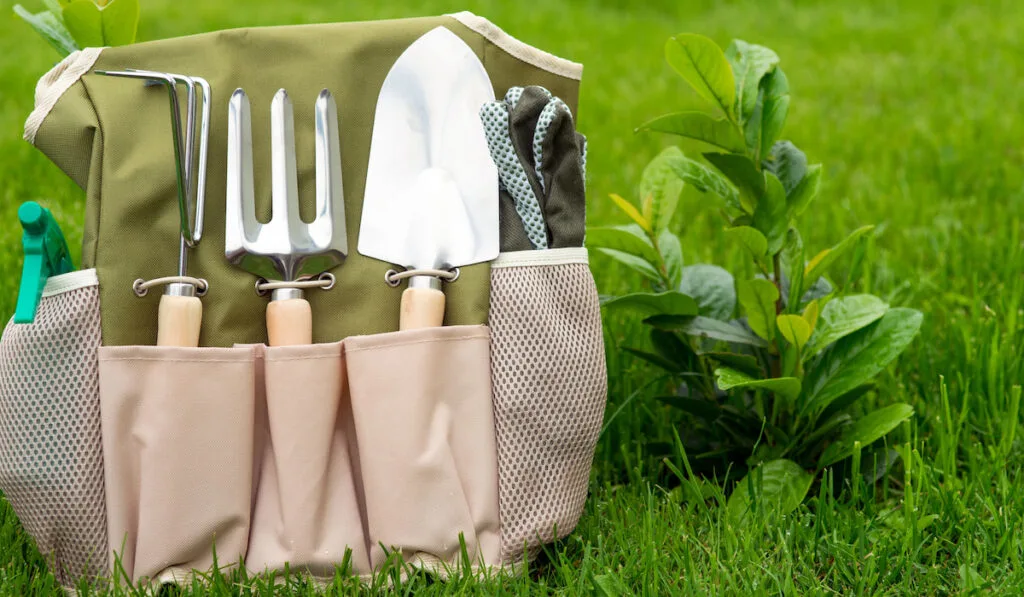
To make it easy to care for your aloes, you’ll need tools like every other gardener. Here are examples of tools that you need and their use:
- Gloves: To protect your hands from dirt, the thorns of your aloes (if present), and sharp tools.
- Shears: To prune your aloes or collect their gel-filled leaves.
- Spray bottle: You can use a spray bottle to water your aloes, spray homemade insecticides, or administer fertilizer to the plants.
- Measuring cups or scales: If you plan to make your fertilizer or substrate by yourself, you need a measuring tool to help you achieve accuracy.
- Gardening trowels: You will use trowels to dig the soil or substrate so that you do not stain your fingers.
When you have these tools, you are almost ready to start your aloe-growing journey.
7. A Suitable Spot
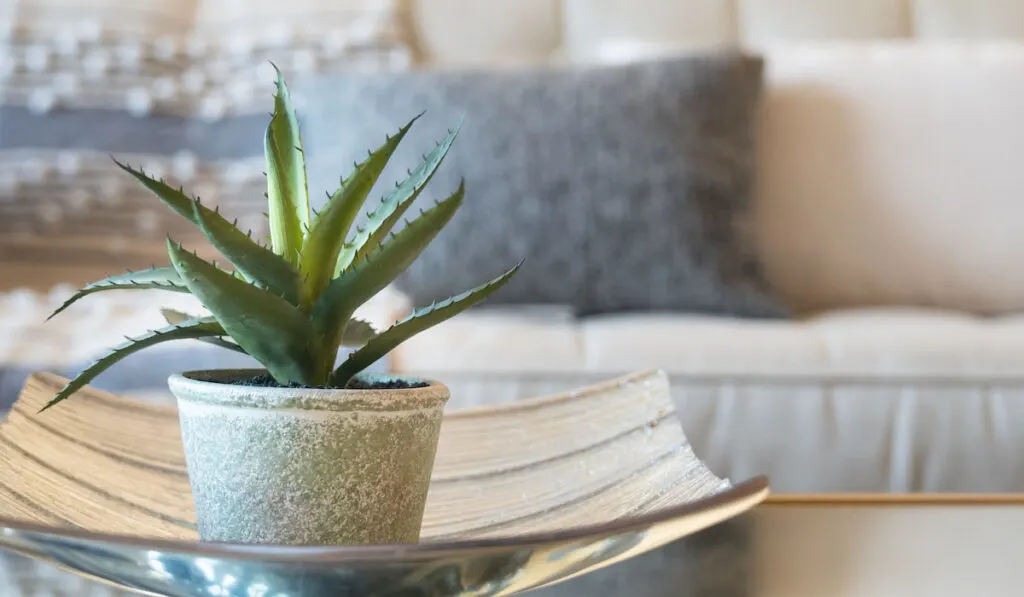
A suitable spot for aloes is any spot with the right growing conditions for the plants. Here are some factors that you must consider before choosing a spot:
- Temperature: Temperature is particularly important when it comes to choosing a spot for growing your aloes. This is because almost every process in plants relies on the temperature of the plants’ surroundings. For aloes, ensure that the spot is at 55 to 80°F.
- Humidity: Humidity helps your aloes to collect water from the substrate and discharge the water from their leaves through transpiration. Aloes grow naturally in arid places, so the humidity of the room should never be significantly higher than the average.
- Light: Your aloe plants need six to eight hours of sunlight daily. In the summer months, you can protect them from the hot sun by using a shade cloth.
After gathering everything that you need, keep reading to learn how to grow the aloes indoors.
How to Grow Healthy Aloe Plants Indoors?
To grow your aloes without problems, here are some tips for you:
1. Watering the Aloe Plants

Aloes prefer dry substrate, so you will only water them when the substrate is almost completely dry.
In the active growing months of aloe plants (spring and summer), water the plants once or twice every week.
You do not need to water your aloes in autumn and winter unless the substrate goes completely dry.
Here are some ways to water your aloes:
- Misting: You can water the aloe vera plants by misting them with water. You should use the spray bottle and spray water droplets on the leaves. Do this in the morning so that water droplets do not stay on your aloe leaves for long.
- Watering the roots: Just like every other plant, you can water your aloe plants by pouring water on the substrate so that the roots can get enough water.
- Watering the saucer: If your pot has a saucer, you can pour water on the saucer. The substrate will absorb the water until it reaches the roots of your aloes. Remember not to use too much water.
2. Feeding the Plants
As stated earlier, the best way to feed aloes is to amend their substrate with organic nutrients or slow-release granules so that the plants can collect nutrients from the substrate when they need to.
If you are growing your aloes in a substrate without many nutrients, you can feed them once monthly for a regular houseplant fertilizer.
3. Know When to Prune Your Aloe Plants
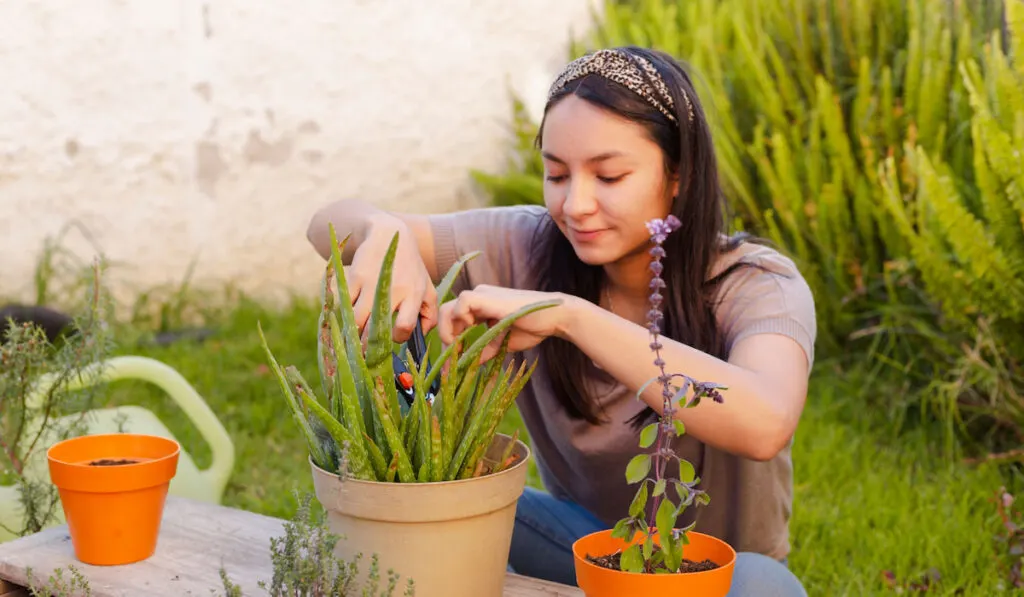
Even though aloes are slow growers, they will fill up the pot in a few years.
The more aloes grow in the pot; the more pops they will produce. This means that you will need to control the growth rate and population of your aloe vera plants.
Make sure that you use sterilized pruning shears when pruning your aloe plants so that you do not expose them to microbial attacks.
Before disposing off your aloe vera offsets, ask your neighbors if they need any or plant the offsets in new pots.
4. Occasionally Repot the Aloes
Aloes may take up to five years or more to fill their pots. If you see the need to repot your plants, you can transplant them into a new pot that is larger than the previous pot by two inches in diameter.
When repotting the aloe plants, you can split the aloe plants and grow them in different pots.
Also, please examine the roots of your aloe vera plants and make sure that they look healthy before you transplant them.
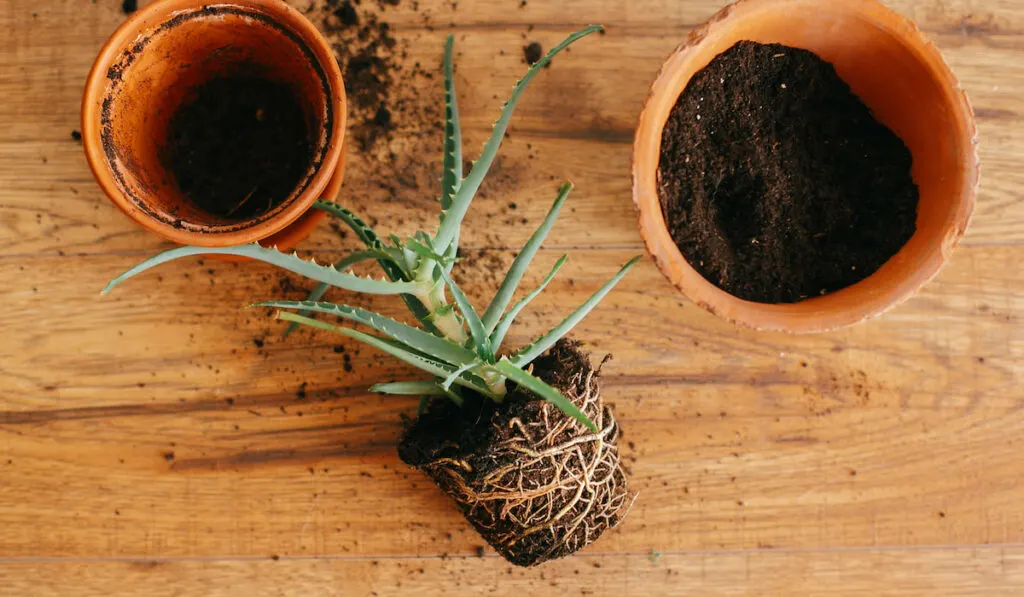
5. Always Monitor Your Plants
Even though aloe plants are hardy and slow growers, they still need you to constantly care for them. Do not abandon the plants and make sure that they get enough water and nutrients as regularly as they should.
If you follow the tips above, your plants will thrive!
Frequently Asked Questions
Here are some related questions that people ask:
1. Can Aloe Grow Indoors Without Sunlight?
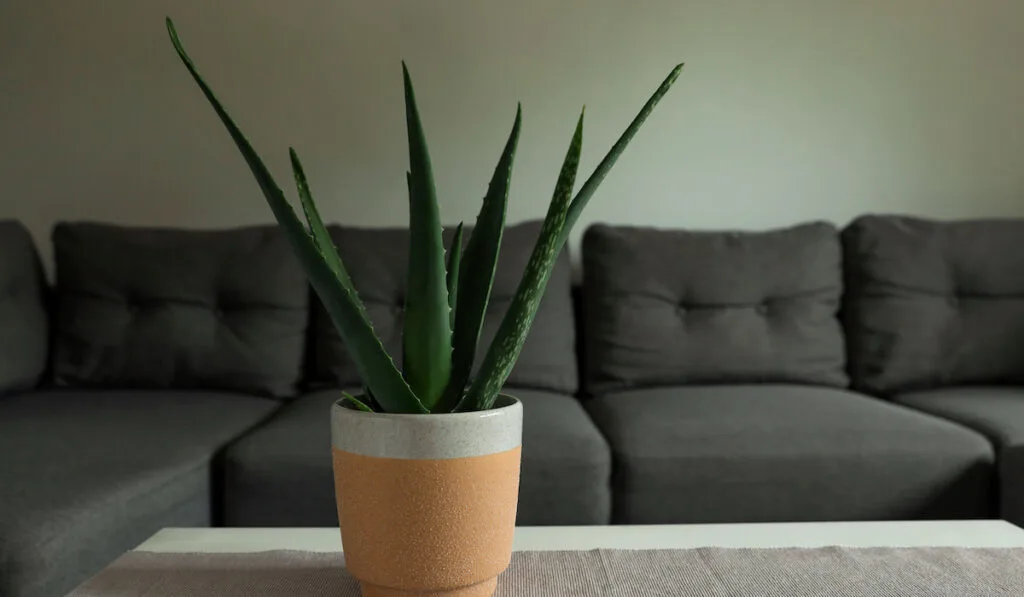
Aloe plants naturally grow in places with full sun and high temperatures. This means that they are well-adapted to receiving six to eight hours of sunlight daily.
If your aloes do not get enough sunlight, they will either die or experience stunted growth.
The use of artificial light such as a grow light for aloes is to support (but not replace) the natural light that the plant is already receiving. For example, you may wish to grow your aloes under a grow light in the winter months if there is not enough sunlight.
However, you cannot grow your aloes with only a grow light year-round, as you will end up spending too much on power.
2. Can Aloe Plants Be Put Outside During Summer?
You certainly can take your aloes outside in the summer months. Aloe plants do not mind all the sun and heat, so not much harm will be done. However, if there is a heatwave, you should grow the plants under shade.
You can tell that your aloes have sunburn when you see their leaves turning brown from the tips and edges.
To prevent sunburn in the summer months, you can keep your aloes at a spot where they get around six hours of sunlight, especially the morning sun and are shaded from the full afternoon sun.
3. How Fast Will Aloe Plants Grow Indoors?

The growth rate of indoor aloe plants depends on the growing conditions (especially access to light) of the room. If your aloes get as much sun as they need, they can grow a new leaf in two weeks (at most) just as outdoor aloes. However, if the growing conditions are poor, the growth rate will reduce.
When compared to other plants, aloes are slow growers. This means that you should try your best to grow them in the best growing conditions if you want them to grow as fast as they can.
Note that a reduced growth rate can also be a sign of pest attacks and nutrient deficiency.
4. How Do You Harvest the Aloe Gel?
When your aloes have enough mature leaves, you can start harvesting the gel in their leaves if you want. Harvesting the gel is easy. All you need to do is to collect a mature leaf using a clean knife or scissors and then squeeze the gel out. You should keep the gel in a clean and dry container afterward.
If you want to make use of the gel immediately after collecting the leaf, slice the leaf from the middle and then place it on your skin gel-side down. Keep the gel on the skin for as long as you can and then rinse your face with clean water afterward.
5. Why Are Your Aloe Plants Dying?
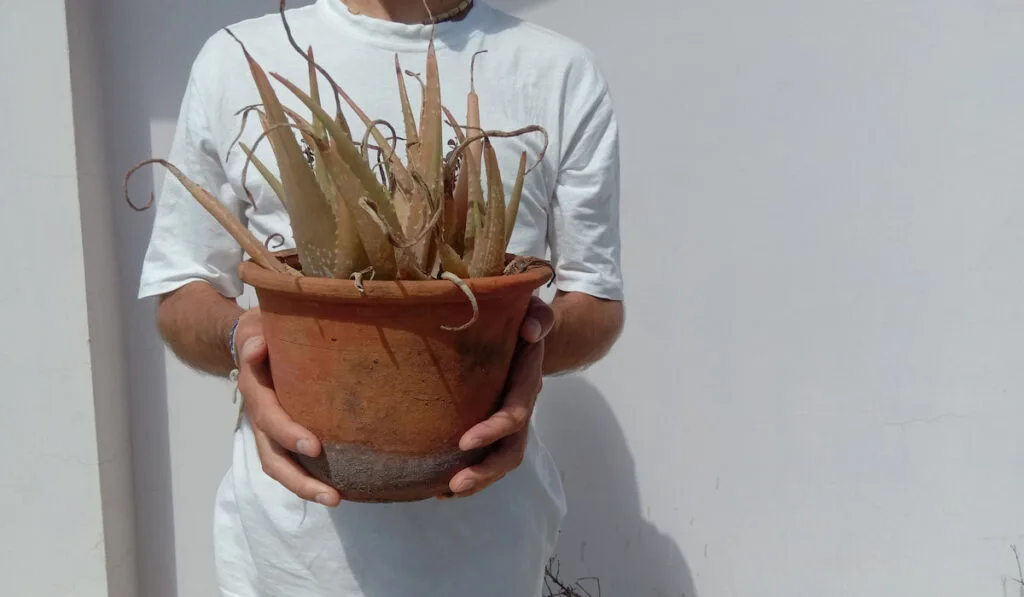
Here are some reasons why your aloes may be dying:
- Not enough light: Aloes need six to eight hours of light to grow. If they do not get up to four hours of direct sunlight in their growing season, they might die.
- Too much water: Aloes prefer dry substrates. If the substrate is too wet, they might develop root rot and other soil-borne diseases.
- Wrong potting mix: The wrong potting mix can become compacted easily or may have more nutrients than what your aloes need. Aloe substrate should be loose or airy.
- Stressed store-bought plants: Your aloes may be dying if they were stressed in the store. Also, stress caused by transporting or transplanting aloes can kill them.
So long as the growing conditions are right, your aloes will not die.
Conclusion
As you can see, aloes are easy to grow indoors. You just need to remember their preferred growing conditions such as their lighting and humidity needs. Remember to use every tip in this article to grow your aloes without problems.
Resources
Knowledge from personal experience in growing aloes added to ideas and tips from the following articles aided in the production of this article:
